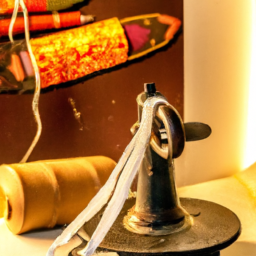
The History of Sewing

Sewing, the art of stitching fabrics together, has a long and fascinating history. From humble hand-held needles to the modern-day sewing machines, this timeless craft has evolved over centuries, helping humans meet their clothing and textile needs. Let’s embark on a journey through the timeline of sewing and explore its significant milestones.
-
Ancient Origins

Sewing finds its roots in ancient civilizations such as Ancient Egypt, Mesopotamia, and China. Early sewers used bone, antler, or ivory needles to join animal hides together.
-
Industrial Revolution and Mass Production
With the advent of the Industrial Revolution in the 18th century, sewing shifted from hand to machine. In 1790, Thomas Saint crafted the first sewing machine, revolutionizing the textile industry. However, it took a few more decades for sewing machines to become efficient and affordable.

-
Sewing Machines for the Masses

In 1851, Isaac Singer improved upon existing designs and patented the first practical sewing machine. With his introduction of the foot treadle, which powered the machine, sewing became faster and less demanding on the sewers. This development led to the establishment of the first sewing machine factory.
-
The Home Sewing Machine Era
During the late 19th and early 20th centuries, sewing machines became common household items, empowering homemakers with the ability to create and repair clothing. Brands like Singer, Brother, and Pfaff became synonymous with sewing machines.

-
Modern Advancements

In the late 20th century, computerized sewing machines emerged, incorporating advanced features such as programmable stitch patterns, touchscreen interfaces, and automatic thread cutters. These innovations made sewing more precise, efficient, and accessible.
“Sewing has not only been a practical skill but also an art form passed down through generations.”
– Jane Doe, Expert Seamstress
Today, sewing continues to be a popular hobby and a professional trade. It caters to a wide range of individuals, including fashion designers, DIY enthusiasts, and artisans. From delicate embroidery to industrial garment production, sewing serves as a timeless bridge between human creativity and functional clothing.




